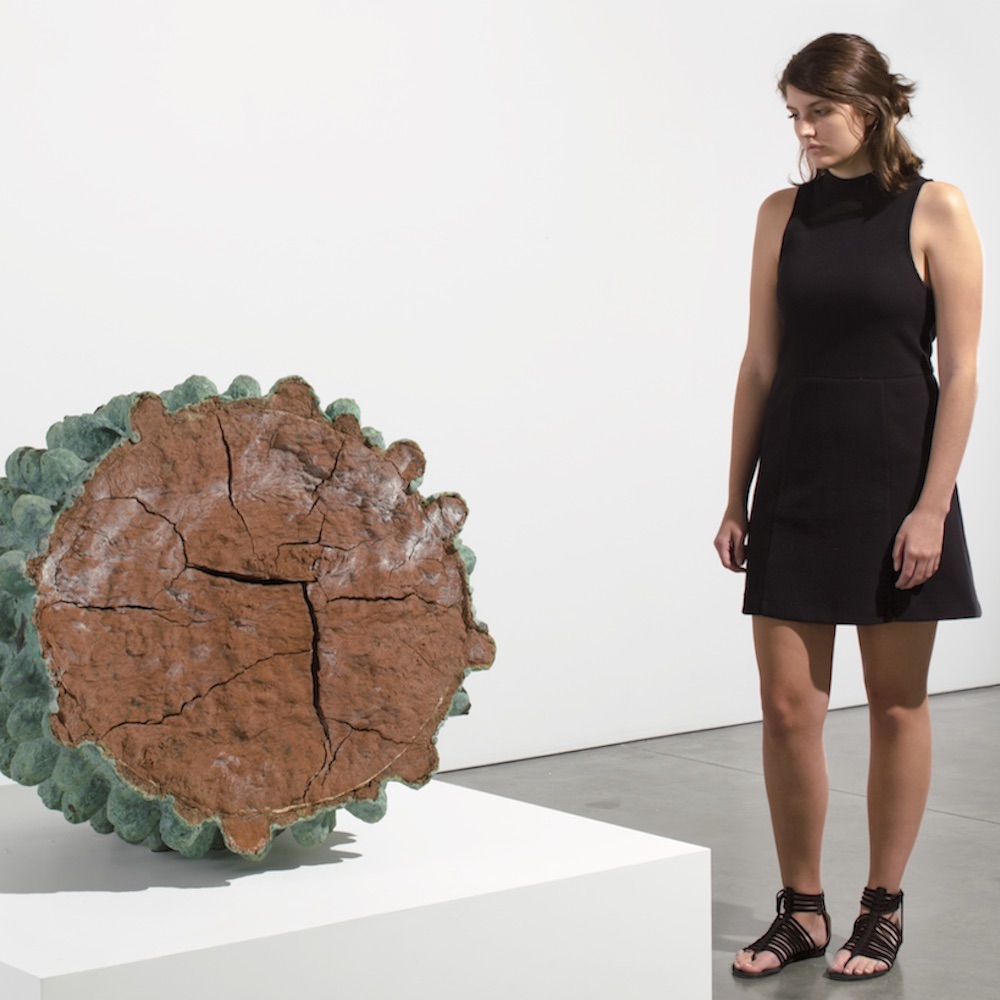NEW YORK CITY — Graham Marks has an artist statement on his page that has been evolving over the course of several decades. Way back in 1988 he wrote that he wanted his work to “exist below the threshold of names,” adding that he was particularly moved by Neolithic art because they show, at the most basic level, humanity grasping resources at hand and using them to approach ideas larger than themselves. If he was a linguist, he’d be studying morphemes, the smallest chunk of language that has any meaning at all.
By 1991 he was still fascinated by that idea and was interested in applying it to the topic of how our fate and nature’s fate are linked. From the artist:
At this point in time it is quite clear that our fate and the fate of nature are inextricably linked. This thought frames the inquiry of my current work. I want to make objects that I hope could trigger connections between the biologic, the geologic, and the technologic. I want the work to enlist the inherent qualities of both clay and fire and reflect a tension between human action and material fact. I intend for the work to challenge a mechanistic and technological world view through a textural and haptic experience and provide a rich, multi-layered reference to time, nature, humanity, and earth.
Thoughts like those above made Marks a natural fit for Empirical Intuitive Absorption at New York’s Andrea Rosen Gallery (June 28 – August 12). The title complicates a simple idea. Curator Matthew Ronay states that he is fascinated with the idea of how some cultures communicate through very basic symbols. Could the same be done through abstract art? Is there a visual code that could be communicated through very basic shapes? Perhaps words like “simple” and “basic” cast it in a bad light, because Ronay quickly goes galactic in his scope. From the curator:
The Science of the Dogon: Decoding the African Mystery Tradition by Laird Scranton, a book of guerilla scholarship, proposes that the Dogon people of West Africa, whose creation mythology is told through symbols, sculpture, and architecture, had knowledge of the genesis of matter, biology on an atomic level, astronomy, and other psychical phenomena that would have been impossible for them to have understood through direct observation. When viewed thorough this lens, it’s uncanny the way some of their symbols echo mitosis or string theory, as if their bodies knew.
I wondered, might it be possible that other works of abstraction also have roots in something beyond formal endeavor? Can abstraction be knowledge? Can knowledge be expressed without dogma?
Some abstractions, even if unconnected to organized traditions and mythologies, may relate to something empirical. It is possible that in our evolution from stardust to human that we have absorbed some sort of intuitive understanding of our dawning and being, an implicit inherited memory of our existence, charted out in images of biology, botany, geology, astronomy, etc… Historically, artists have naturally “de-conditioned themselves from the community’s instinctual distrust of the mystery…to go between ordinary reality and the domain of ideas.”* They’ve trained to relax and discharge the repeating song of the universe in its echoing forms of micro and macro, biological knots, and intricacies. These ideas then become narratives, then parallel into mythologies. Does everything loop back into nature?
Marks was joined in the show by Serge Charchoune, Fernand Léger, Terry Riley and Ronay. I think the linguistic lens is a useful one here. Different cultures meeting one another for the first time will develop an ad-hoc language called a “pidgin,” which uses traits of each language to convey basic ideas. It’s not much of a stretch to guess that our very earliest cultures went through a parallel experience with art. Though it may be impossible to go back there, it’s still worthwhile to try.
Bill Rodgers is the Managing Editor of cfile.daily.
Do you love or loathe this use of contemporary ceramic art? Let us know in the comments.













I have loved Graham’s moving work for decades. So glad to see this beautiful exhibit.
Of course! Art is the only way we can communicate with our early ancestors, and it is a two-way conversation. Graham Marks has been one the most vital translators for our side of this conversation for decades.